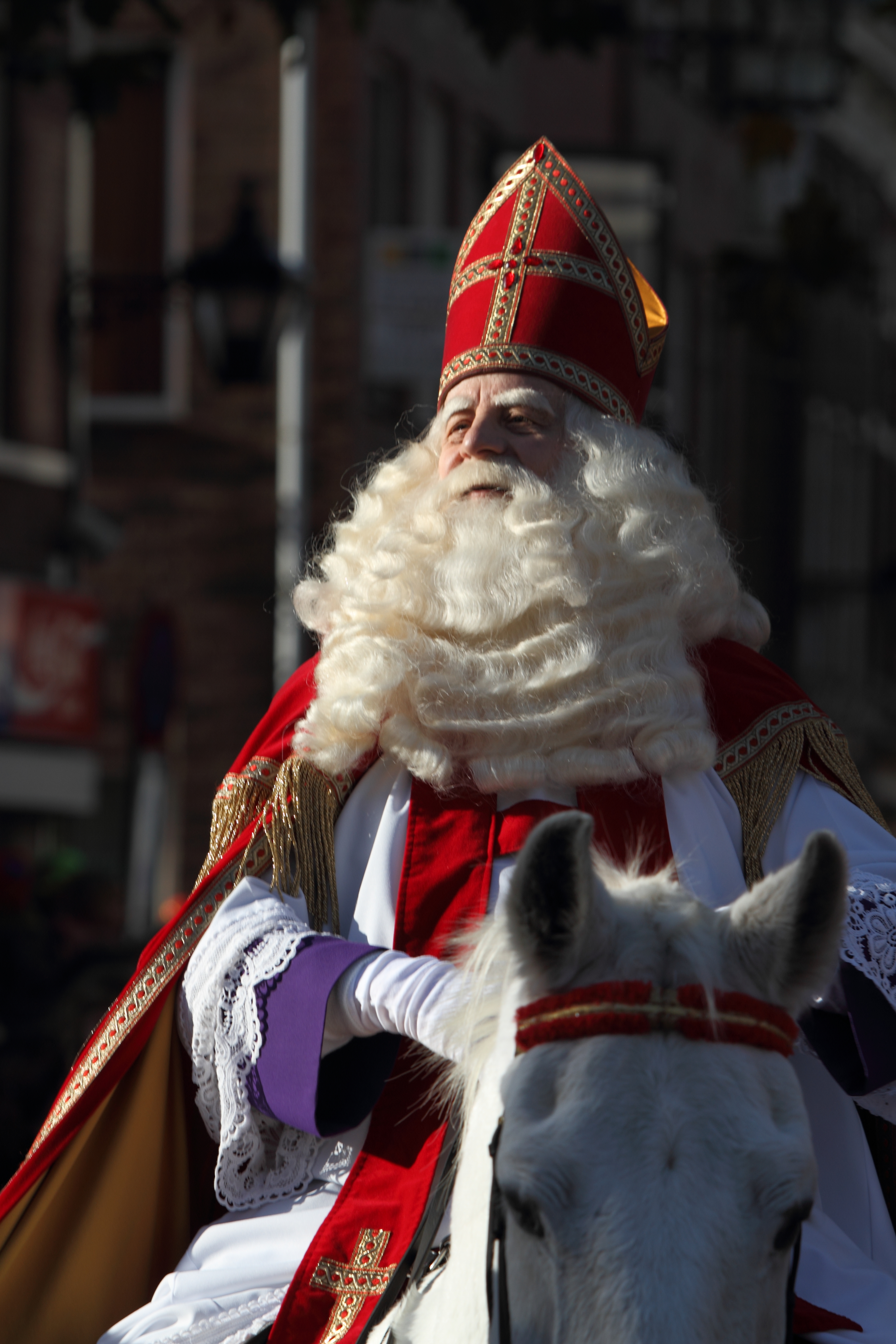
Sinterklaas rides a horse in Schiedam, Netherlands. (Photo courtesy of Sander van der Wel)
Western Europe celebrates Saint Nicholas Dec. 5, 6
BRUNSSUM, Netherlands – A bearded man dressed in a red robe delivering gifts to children who’ve been good -- sounds familiar? We’re not talking about Santa Claus, but his European predecessor: Saint Nicholas.
Saint Nicholas is celebrated in many countries throughout Europe, including Belgium, Germany, the Netherlands, and France. Though the date of the celebration differs – in the Netherlands, it’s celebrated Dec. 5, and Belgium, Germany and France, on Dec. 6 – there are many similarities. For instance, he is dressed in a red robe and wears a bishop’s miter. He also rides a horse, has a helper and drops gifts through the chimney. But only to children who have been good during the year!
The origins of the Sinterklaas tradition date back to the fourth century, to the bishop of Myra in Asia Minor (in what is now Turkey). The Saint performed many charitable deeds, and was among other things, a patron of children. He also had a legendary habit of secret gift-giving; he would throw pouches with coins through the windows of poor peoples’ homes.
Even though Saint Nicholas is not celebrated in Spain, it is believed that he travels from Spain by boat. His arrival each November is a big event for children. During and lead-up to Saint Nicholas Day, children put out their shoes, sing songs, and leave goodies and carrots. And if the children have been good, they receive small gifts or coins made of chocolate.
In case you’re wondering; yes, Santa Claus does have roots in Saint Nicholas. It is believed that Dutch immigrants who settled in New York brought along the ‘Sinterklaas’ phenomenon in the mid-16th century, soon known by English-speaking children as ‘Sinty Claus’. Over centuries, Saint Nicholas evolved into the Santa Claus we know today.
USAG Benelux Public Affairs




